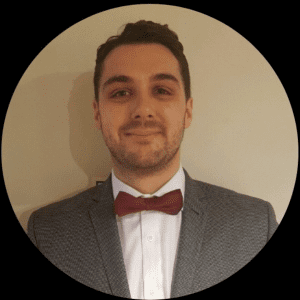#UCEM100 February centenary blog: Iconic buildings – Crossrail
Posted on: 26 February, 2019
Having launched our monthly centenary blog last month, this month’s blog is the first on one of our centenary themes – namely, iconic buildings.
During the course of 2019, we will mark the impact made by our students, alumni and staff to the Built Environment by focusing on individual stories relating to four iconic buildings. First up is the incomplete Crossrail project and we speak to alumnus, Robert Nicholson (MSc Quantity Surveying, 2015-2017) about his work on the highly anticipated English railway line.
- How did you become involved with Crossrail?
I joined Kier Group as a Graduate Quantity Surveyor and was fortunate to be placed at Farringdon Station as part of the Bam Ferrovial Kier Joint Venture.
- What was your role in the project? And from what years?
Originally joining as a graduate in June 2015 and then running my own section of works as a Contractor’s Quantity Surveyor, I commercially managed multiple subcontract packages and the platforms section of works. I procured, administered and final-accounted various types of contracts and packages, negotiated change items and regularly reported to the client. I left the project in June 2018.
- Where does it rank out of the projects you have worked on?
Until I left in June 2018, Farringdon Station was the only project I had worked on. It was the most fulfilling project, where I learnt a huge amount, worked with a high-performing team and met such talented people.
The evolution of Crossrail at Farringdon Station. All photos courtesy of Robert Nicholson.
- What are your views on Crossrail and the outcome at Farringdon?
Crossrail will be a magnificent addition to the London Underground as it will serve as an essential transport link and alleviate pressure on current lines. Granted the project cost the taxpayer a hefty sum, however, it will be worth it when Crossrail finally opens this year.
The outcome at Farringdon shows just how important collaboration in construction is, serving as a beacon for the way future projects should be administered between client and contractor. The working relationship there was in complete contrast to the reputation the construction industry has of being adversarial.
- How does your involvement with it make you feel?
I am proud to have contributed to a project that will change London forever and provide much-needed capacity for Londoners. I look back with the fondest of memories.
- What are you getting up to now?
I moved to the San Francisco in the United States in June 2018 to work for Turner & Townsend. My current role is working for a high-tech client, leading the Central Estimating and Capital Planning Team building Data Centers globally. It has been a huge transition but the best choice – experiencing life abroad and in a role very different to Farringdon.
- What interests you about the Built Environment?
The Built Environment is the cornerstone of civilization and provides essential amenities and facilities to the population. I am interested in how the Built Environment can improve life experience, changing how people undertake their day-to-day lives.
Skylines provide a vista depicting the narrative of a location’s history. Working on projects that have a tangible outcome is satisfying and varied.
Thank you, Robert, and best of luck with your new life in America!
Next month, the centenary blog will move onto its second theme, which is inspiring women in the Built Environment and a story about a pioneering surveyor will be published.
For more on our centenary, visit www.ucem.ac.uk/100-years-of-ucem/








